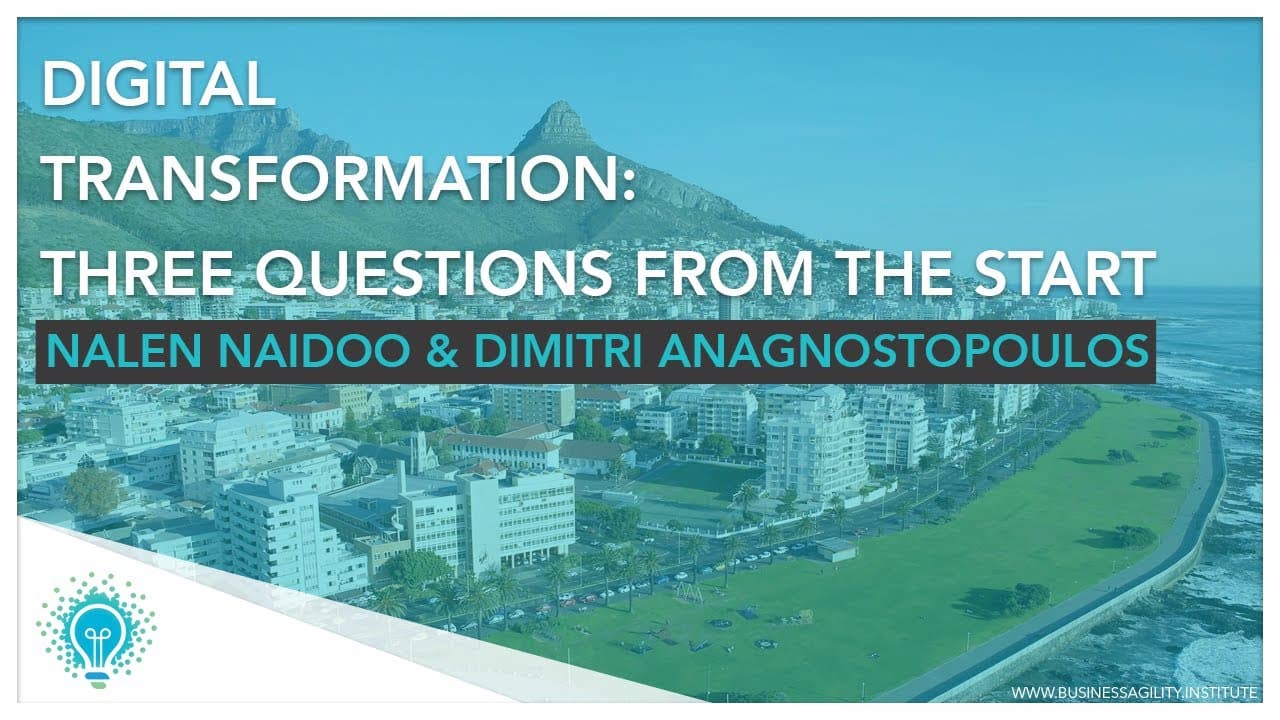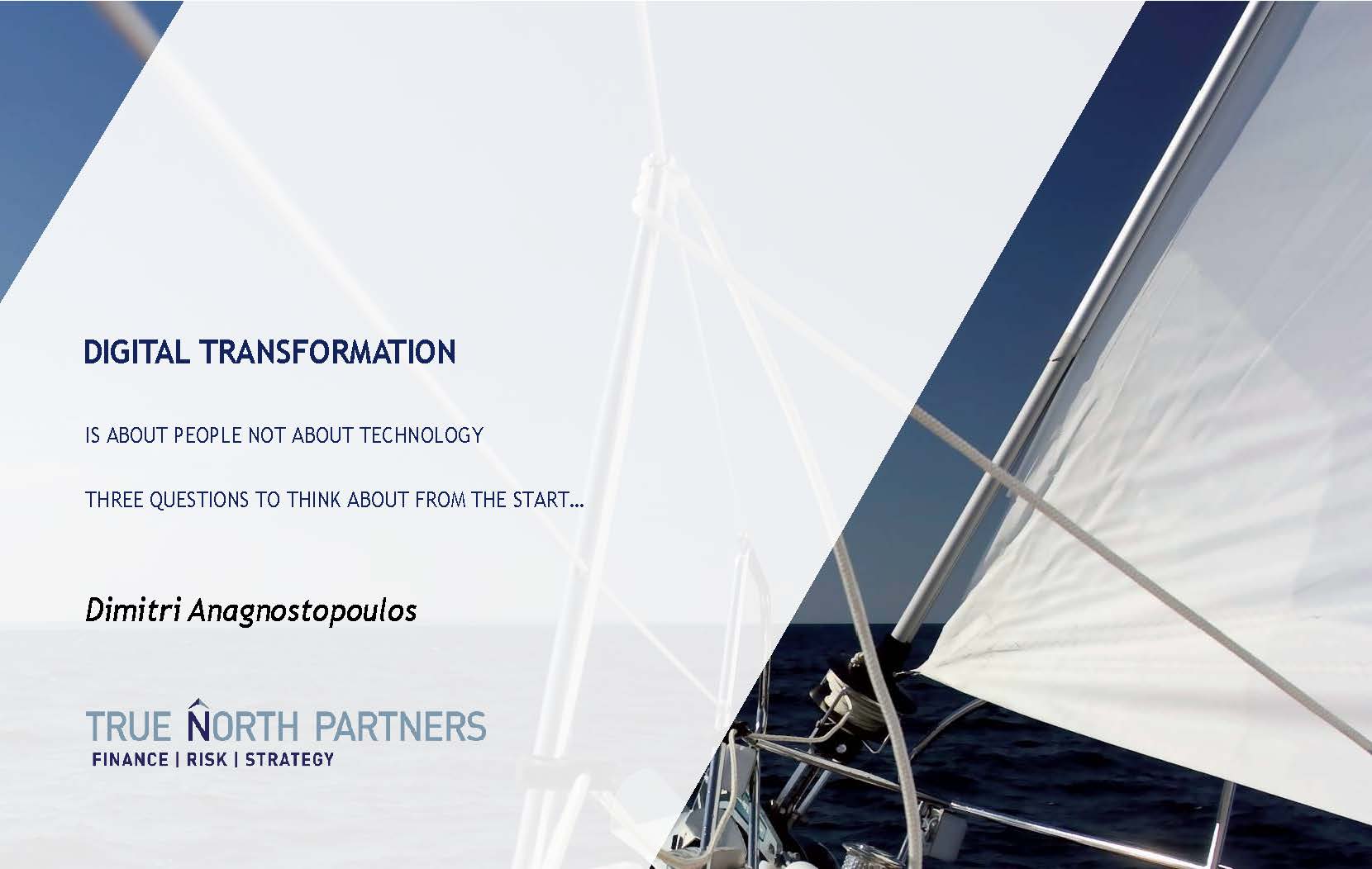Thank you, Gwen. If you can buy enough technology and form enough agile teams to implement it, you can actually achieve digital transformation very quickly. Thank you, thank you very much. Not really, is it?
It is not about the tech, and tech is not a silver bullet for what you're trying to achieve with transformation. Digital transformation is about how we can run our organizations efficiently so that we can achieve our business goals and objectives. The old saying is not just about doing things right but doing the right things. When you put statements like that on a slide, it is important to clarify what you mean. Otherwise, they become just marketing statements on a financial brochure.
When striving for transformation and adopting new ways of working, such as agile, it is important to understand what problem you are trying to solve. What are the obstacles? Where do these obstacles reside? Ask yourselves the right questions. Is that transformation linked to strategy? Do we have the right culture? Do we have the processes to make this happen?
These questions matter because transformation and agility cannot come from just one department under the chief digital officer, digital officer, innovation officer, or group technology. You need every single employee in the organization to have the mindset of challenging the status quo. Challenging "this is the way we've done things so far" must happen across all levels of leadership and teams. Without that, any new idea, no matter how innovative, will be deemed a threat because it threatens people's jobs.
When I speak at conferences about digital transformation, innovation, fintech, or agility, 90% of the room is filled with digital officers, innovation officers, and agile teams. My question is—where is risk? How many CEOs are in the room? Where is compliance? Where are the three lines of defense? Where is finance and accounting? Marine already asked about sales. Where is marketing? As if transformation will only come from one department under the digital officer.
Let's be mindful. You can throw as much technology as you want into your firm, but firms are run by people. Graham said it as well—there’s no such thing as an organization, only a collection of people. When you try to bring an efficiency mindset, remember that efficiency is a mindset, not a tool. And because we are dealing with people and human behavior, remember that people manage their careers, not their jobs.
If we were managing a job, we would go back, look at the strategy, analyze business objectives, and figure out what needs to be done. But we don’t do that. What do we do? We focus solely on KPIs because that is what drives bonuses. KPIs and incentive schemes are about numbers, not clients. Yet, most company strategies talk about clients, not profits.
Organizations are large, with many departments, teams, and customized KPIs, all reinforcing a silo mentality. This makes it difficult to operate under the same objective. The military, for example, operates under one clear goal. Whether invading or defending a territory, every soldier is aligned with the objective. Losing a general or commander makes it harder but does not change the mission. This is not happening in our organizations, which is why we must link strategy, processes, and culture.
Let’s make this more practical. I work largely with banks and insurance companies and conducted a deep-dive analysis into portfolios labeled with buzzwords like "digital," "agile," and "Fastlane." The problem statement was always the same: "We do not realize the benefits of these innovations." That is not the problem—it is the symptom.
Looking at the process, you start with a pool of ideas—internal or external. You prioritize them, move them into pre-execution, business case strengthening, and implementation. Agile teams work on execution, rollout, and benefits tracking. But you cannot see the benefits.
We examined business cases over two financial years. The first year, the CEO's mandate was revenue uplift. Every business case was linked to revenue, even if it was about internal efficiencies. The next year, the focus shifted to cost reduction. Business cases became less ambitious and less complex to ensure on-time, on-budget completion. Departments tagged multiple projects but had no intention of implementing them—just to secure budget.
Meanwhile, capacity management tried to plan skills and teams. The first phase showed that projects were selected based on short-term KPIs, not strategic objectives. The next phase became bureaucratic, requiring up to 150 signatures. This delayed execution by months or even a year. No one had the mandate to stop a failing project, leading to wasted investment.
The shocking reality? Every single business case that entered pre-execution moved into implementation—100% of them. Not 99%, but all. Organizations landed in execution with delays, capacity mismanagement, and no link to real strategic levers. Agile teams were blamed for inefficiencies when the issues were rooted in leadership decisions.
At the end, leadership observed rather than acted. Everyone operated within their KPIs, reinforcing silos. When asked to demonstrate customer value, teams scrambled to retrofit benefits, instead of starting with client needs. Transformation should be about business objectives, yet many companies chase innovation for the sake of innovation. It is easy to fall in love with solutions and then search for problems to apply them to.
In closing, it is not about technology—it is about changing foundations. Technology is easy to buy. But if your system can only support 60 km/h, even the fastest train will not go beyond that. At this point, I invite Naland from Liberty to share their innovation and digitalization journey, and how they tackled the key questions discussed today. Thank you very much.







